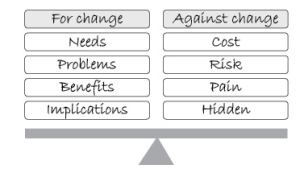(Original Polish translation: Nie mój cyrk, nie moje malpy)
In simple terms this means ‘Not my problem’ but let’s be honest, ‘not my circus, not my monkey’ is a whole lot more colourful to say and will definitely get you noticed when you say it.
This thought or attitude draws us to a typical challenge for the project manager who wants to be more ‘social’ since in traditional terms a project manager would have the attitude of ‘this is my problem’ and, as a result, would get involved to resolve the issue. Now in the more ‘social’ world the project manager needs to have the attitude that the project team should be capable of resolving issues without involving the project manager in many cases. Not all of course, since some would be significant enough to escalate to the project manager level. But in general terms it is a change of focus for many project managers.
That said I have, ever since ‘The Lazy Project Manager’ was written, advocated that project managers need to trust their teams a lot more that perhaps many do, and the move towards being a social project manager demands that this is the case.
When it comes to involvement then in my other book on ‘productive laziness’ called ‘The Lazy Winner’ I speak specifically to a decision process that helps project managers, and others, assess whether any specific activity is your ‘problem’, or perhaps I should say ‘is your circus, is your monkey’ (if you can have a reverse version of the polish idiom).
There are 3 tips[1] I recommend and below I have adjusted these 3 tips to the world of the social project manager:
Tip #1: Do I want to get involved? Even if I do want to get involved, do I need to get involved?
Don’t do something just because everyone else does it or because it is the ‘usual thing to do’. Just running with the pack is never going to allow you to take control of your own time and will only lead you in to over-commitments. It will also detract from your project team’s capability and confidence in resolving questions and issues themselves, without having to always involve you, the project manager.
If you really want to change things for the better then begin by asking yourself two questions: ‘Is this really necessary I get involved?’ and ‘Is this really worth getting involved (for yourself and for the project as a whole?’
If the answer is ‘no’ to either of these questions then simply don’t! Of course there will be times when you ignore this advice because you are compelled to get involved because ‘it is the right thing to do’ but really you need to make these exceptions just that, exceptional.
Challenge yourself the very next time a decision has to be made that involves your personal time – ask those two critical questions ‘Do I need to get involved and do I want to get involved’. By addressing objectively the decision making process, rather than being swept up in enthusiasm, acceptance of delegation, or assumption that you do have to do something then you will be better prepared to a) do what is important and b) do a good job on what you accept is important.
Tip #2: Is the result or outcome worth my effort?
Only do the things with the most impact. It is all about applying the good old 80/20 rule. What are the most critical things that you need to get involved in? What is the 20% that will deliver the 80% of value (and not the other way around that most people do – often the easier actions that deliver a false sense of progress). Get the priorities right and you will achieve far more, and by prioritising this way and assessing if the outcome or output is worthwhile then you can help do what is most important.
Your time is limited (some people seem to believe that time is flexible and infinite but they also tend to over-promise and under-deliver) so invest it only in things that give you the most return on your personal investment. As with all of these guiding rules there will be exceptions.
Tip #3: Do I have to get involved myself?
Ask yourself if you really are the best possible person to do whatever it is that needs to be done or is there someone else in your project team who is better qualified than you to do this thing? Or indeed can the collective team, using social tools, address the issue or task in a far better way than you can yourself. Being honest here and thinking about the project as a whole rather than yourself will lead you to make better decisions.
The strength of saying ‘No’ should not be underestimated and saying ‘No’ can be a very positive thing, if you don’t say ‘No’, ever, then you will never achieve anything. There is the ‘what goes around comes around’ idea as well. Sometimes you shouldn’t say ‘no’ because despite the fact that you may not want to do something, need to do something and there is someone who could do it better, you do want to help out and be that team player or Good Samaritan.
Or, it is in your interests to get involved so that you can learn some new skills, in which case you may well not be the most obvious person for the job.
It is all about balance and priority. Overall you want to deal with the important stuff plus a reasonable amount of other stuff.
If you keep saying ‘yes’ then your backlog will never go down and you will spend far too much time working on the unimportant and your project team will be passive and defer always to you in your role as a project manager, in other words you won’t be a social project manager and they won’t be a social project team.
At every opportunity you must think your actions through to the end, as best that you can, and aim to optimise your personal return on your personal investment whilst at the same time maximising the project teams capability to deliver as a collective, as a social collective.
[1] In The Lazy Winner there are actually 5 tips but the latter 2 are focused in the scale and scope of involvement rather than the question of being involved or not.






